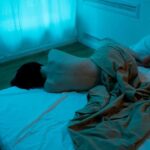
The Silent Epidemic: Understanding Sleep Disorders in Women
Sleep, a fundamental pillar of health, is often elusive for a significant portion of the population. While sleep disorders affect people of all genders, women are disproportionately impacted. They are up to 40% more likely to experience insomnia than men and face a unique set of biological, hormonal, and socio-cultural challenges that disrupt their slumber. This isn’t merely about feeling tired; chronic sleep disruption in women is a serious public health issue, intricately linked to physical health, mental well-being, and quality of life. Understanding the “why” behind this disparity is crucial to finding effective solutions.
The Hormonal Rollercoaster: A Lifelong Influence
The primary differentiator in female sleep health is the profound influence of hormones. The fluctuations of estrogen and progesterone throughout a woman’s life stages directly affect sleep architecture, circadian rhythms, and vulnerability to disorders.
1. The Menstrual Cycle: For many women, sleep disturbances are a monthly occurrence tied to their cycle. In the premenstrual phase, falling and staying asleep can become difficult. This is often attributed to the rapid drop in progesterone, a hormone that has sleep-promoting and mild sedative effects. Additionally, physical symptoms like bloating, breast tenderness, and cramps, coupled with psychological symptoms of Premenstrual Syndrome (PMS) or the more severe Premenstrual Dysphoric Disorder (PMDD)—such as anxiety, irritability, and mood swings—create a perfect storm for insomnia.
2. Pregnancy: Pregnancy is a time of immense physical and hormonal change, and each trimester brings its own sleep challenges. The first trimester is dominated by fatigue and a surge in progesterone, which causes excessive daytime sleepiness but can also fragment nighttime sleep with frequent awakenings. The second trimester often provides a brief respite. The third trimester, however, is notoriously difficult. Physical discomfort from the growing baby, back pain, heartburn, restless legs syndrome (RLS), and the relentless need to urinate make sustained sleep nearly impossible. Furthermore, conditions like sleep-disordered breathing and sleep apnea can emerge or worsen due to weight gain and physiological changes.
3. Perimenopause and Menopause: This transition represents one of the most significant periods of sleep disruption in a woman’s life. The decline and eventual cessation of estrogen production lead to a cascade of symptoms that sabotage sleep. The most famous of these are hot flashes and night sweats (vasomotor symptoms). A sudden surge of heat waking a woman multiple times per night severely fragments sleep, leading to non-restorative sleep and daytime impairments.
Beyond hot flashes, the hormonal shifts of menopause contribute directly to a higher prevalence of Obstructive Sleep Apnea (OSA). Estrogen is thought to help protect muscle tone in the upper airway and stimulate breathing. As estrogen levels fall, the risk of the airway collapsing during sleep increases. Despite this, OSA in women is often underdiagnosed, as their symptoms (fatigue, insomnia, mood changes) can be mistakenly attributed to menopause itself or stress, rather than the classic snoring and gasping more commonly seen in men.
Beyond Biology: The Socio-Cultural “Second Shift”
While biology lays the groundwork, socio-cultural factors act as powerful amplifiers of sleep disruption in women. The concept of the “second shift” is highly relevant here—referring to the unpaid labor of housework, childcare, and eldercare that disproportionately falls on women, even those who work full-time.
This constant state of caregiving and mental load creates chronic stress and anxiety, which are primary drivers of insomnia. The nervous system remains in a state of hyperarousal, making it difficult to wind down at night. A woman might lie in bed mentally running through tomorrow’s to-do list: doctor’s appointments, meal prep, school projects, and work deadlines. This cognitive arousal is the antithesis of the relaxed state needed to initiate sleep.
Furthermore, women are diagnosed with anxiety and depression at higher rates than men. These mental health conditions have a bidirectional relationship with sleep; they cause sleep problems, and chronic sleep deprivation exacerbates their symptoms, creating a vicious cycle that is difficult to break.
Common Sleep Disorders with a Female Face
Several sleep disorders have a particular affinity for or present differently in women.
- Insomnia: As noted, women are significantly more likely to experience insomnia. The interplay of hormones, stress, and mental health creates a perfect breeding ground for persistent difficulty falling and staying asleep.
- Restless Legs Syndrome (RLS): The urge to move the legs, often accompanied by uncomfortable sensations, is twice as common in women. Iron deficiency is a known trigger, and women are more prone to anemia due to menstruation and pregnancy, creating a clear link.
- Obstructive Sleep Apnea (OSA): While more common in men, the risk for women rises sharply after menopause. The presentation is often different—less loud snoring and more subtle symptoms like insomnia, fatigue, morning headaches, and mood disturbances. This leads to a dangerous underdiagnosis, leaving women untreated and at risk for the cardiovascular and metabolic consequences of OSA.
The Far-Reaching Consequences of Sleeplessness
Dismissing sleep problems as mere inconvenience is a grave mistake. Chronic sleep deprivation has severe consequences for women’s health.
- Mental Health: It exponentially increases the risk of depression and anxiety disorders and makes managing existing conditions much harder.
- Physical Health: Poor sleep is linked to weight gain and obesity, as it disrupts the hormones that regulate appetite (ghrelin and leptin). It impairs glucose metabolism, increasing the risk for Type 2 diabetes.
- Cardiovascular Health: Sleep deficiency is associated with higher blood pressure, inflammation, and a greater risk of heart disease and stroke.
- Cognitive Function: “Brain fog,” impaired memory, reduced concentration, and decreased productivity are all hallmarks of insufficient sleep.
- Safety: Daytime sleepiness increases the risk of accidents, both at work and on the road.
Reclaiming the Night: Pathways to Better Sleep
Addressing this issue requires a multifaceted approach tailored to the individual.
- Seek Professional Diagnosis: The first step for any persistent sleep problem is to consult a healthcare provider, preferably one specializing in sleep medicine. This is crucial for ruling out or treating conditions like sleep apnea, which requires medical intervention.
- Cognitive Behavioral Therapy for Insomnia (CBT-I): This is the gold-standard, first-line treatment for chronic insomnia. It is a structured program that helps individuals address the thoughts and behaviors that perpetuate sleep problems. It is highly effective and avoids the pitfalls of medication dependency.
- Hormone Therapy (HT): For menopausal women, discussing the risks and benefits of hormone therapy with a doctor can be transformative. Effectively managing hot flashes and night sweats can dramatically improve sleep quality.
- Prioritizing Sleep Hygiene: Establishing healthy habits is foundational:
- Consistency: Go to bed and wake up at the same time every day, even on weekends.
- Environment: Create a cool, dark, and quiet bedroom sanctuary.
- Wind-Down Routine: Dedicate 30-60 minutes before bed to relaxing activities like reading, taking a bath, or gentle stretching. Avoid screens and their blue light.
- Limit Stimulants: Avoid caffeine in the afternoon and evening, and limit alcohol, which disrupts sleep architecture later in the night.
- Addressing the Mental Load: This requires a systemic shift within households. Partners must equitably share the burden of domestic responsibilities and mental labor. On an individual level, practices like mindfulness, meditation, and journaling can help quiet an anxious mind before bed.
In conclusion, the high prevalence of sleep disorders in women is not a minor issue but a critical health disparity rooted in a complex interplay of biology and societal structure. By moving beyond dismissal and toward a deeper understanding of these unique factors, we can empower women to seek help, improve their sleep, and ultimately, safeguard their long-term health and well-being. A good night’s sleep is not a luxury; it is a non-negotiable component of a healthy life.






